Woman Shares Before and After Photos to Show the Reality of Tanning Beds and Skin Cancer
Editor's Note
This post contains graphic post-operative photos.
As a child, Stephanie Ehrlich, now 30, was one of those kids who spent hours at the pool every day during the summer. Then, when she was 16, she started using tanning beds.
“I tanned a ton,” Ehrlich, who lives in Wichita, Kansas, told The Mighty. “Most of the time, it was on a daily basis and for 20 to 30 minutes at a time. I loved being tan and how the beds made me feel.”
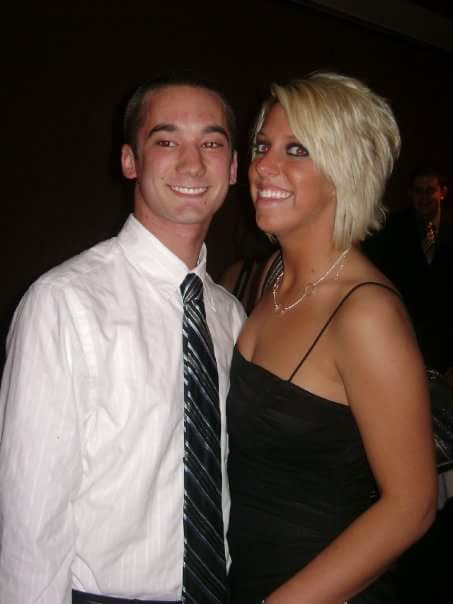
People always told her she would get skin cancer, Erlich said, but she didn’t believe them. She didn’t think she could get skin cancer at such a young age.
When she was 20, she went to her family doctor because of two weird spots on her face — one above the right side of her lip and one on her upper right eyelid. Her doctor didn’t biopsy them, but he did freeze them off with cryosurgery. He never mentioned they could be cancerous, and pretty soon the spots went away.
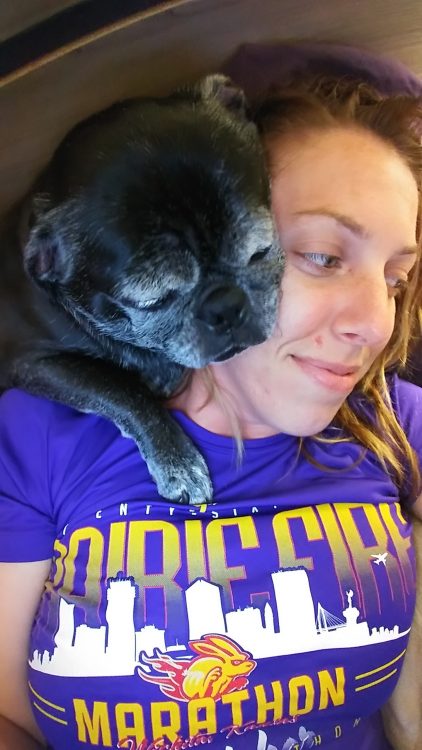
Fast forward eight years later, when, at 28, another spot appeared on her lip. It would randomly bleed and heal, then disappear for months at a time only to pop back up again. The same thing happened to a spot on her breast. She thought it was her sports bra that was causing the bleeding, so she put a band-aid on it and it stopped.
A year later, the spot on her lip started to bleed every day. That’s when she decided to see her family doctor, who took a serious look at it and told her to go to a dermatologist.
“It took me a month to get into the dermatologist,” she said. “So, for that month, I did my own research to find out what this could be. Even before the biopsy, I had figured out that I most likely had basal cell carcinoma.”
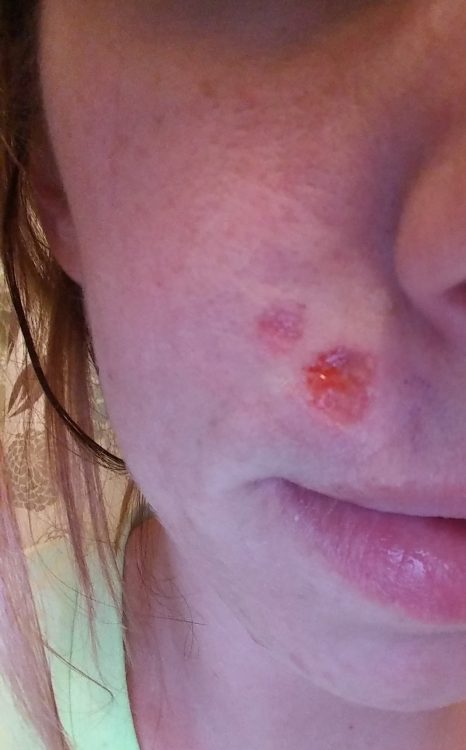
When Ehrlich finally had her dermatologist appointment, she ended up having three biopsies — two on her upper lip and one on her breast. Her doctor told her he thought it was basal cell carcinoma, the most common form of skin cancer in the U.S.
They were both right.
The results showed all three spots were basal cell carcinoma. Erlich was told she would need Mohs surgery — a microscopic surgery done in stages that removes, examines and reconstructs the cancerous area. She was told not to worry because this is the “best kind” of cancer to get in terms of survival rate.
“I know this is supposed to be comforting, but in that moment I was terrified to even hear the word cancer,” she said.
Ehrlich had the spot on her breast removed in August 2017 and the Mohs surgery on her face in September 2017. Since all three spots were so small, she had no idea what to expect post-surgery. The scar on her breast was much bigger than anticipated, but she could live with that.
It was the recovery from the surgery on her face that was traumatic.
The morning of her Mohs surgery, Ehrlich arrived at 7 a.m. and sat in the waiting room with her girlfriend. During that time, a woman came out of surgery with a bandage on her nose. She told Ehrlich this wasn’t the first time she had Mohs surgery done, and that she would be OK. That gave her some comfort, as she continued to believe she would only have a small hole, similar to her biopsy.
Ehrlich said she will never forget seeing her face for the first time. She was lying on the bed when the nurse who was cleaning her up asked if she wanted to see her face. Ehrlich said yes, and looked in a mirror.
“I immediately began to sob because I had this huge hole in my face.”
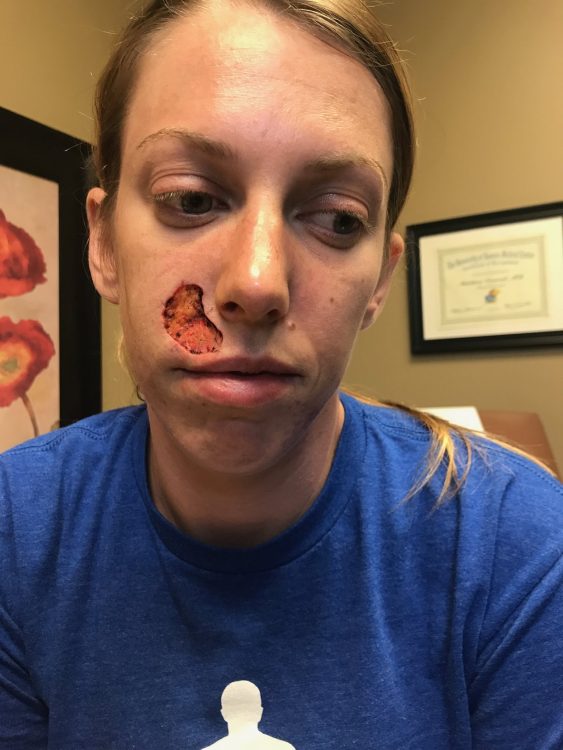
It took four sessions for the doctors to get the cancerous region removed. During that time, Ehrlich had gotten closer to the woman she met earlier, who was going back for her fifth session. As she said goodbye to her, she was devastated at the thought of both of them going through so much pain.
Immediately after her Mohs surgery, Ehrlich went to see a plastic surgeon because the doctor who did her surgery wasn’t comfortable closing the hole in her face.
“I sat down at the plastic surgeon’s office with my face all bandaged up and I tried to not cry,” she recalled. “At this point, I still refused to see what my face looked like and avoided mirrors. The first look was enough for me.”
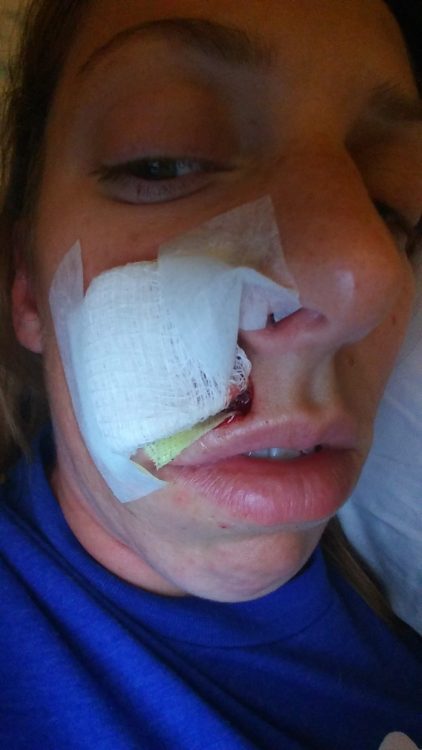
After the plastic surgeon took photos of her face, they discussed a plan on how to close the hole. Because the hole was close to her lip, he wasn’t sure they had enough skin to close it up without messing up the look of her lips. He mentioned a skin graft, which would include her wearing a bag-like object the size of a half banana on her face to help grow new skin.
Ehrlich was, once again, devastated. Not only did she not want something that big on her face, she was a sign language interpreter and she didn’t want her clients looking at it. She also wouldn’t be allowed to move in certain ways and would have to take off work for a long period of time. She wasn’t OK with that and didn’t think it was the best solution for her.
At the end of their meeting, the surgeon said he would go home and think of another solution. The next day, Ehrlich showed up at the surgery center to hear his new plan. He said they would forget the skin graft and try to use skin she already had by cutting a Y shape and literally pulling the skin over the hole. If that didn’t work, they would have to do a skin graft. She felt relieved and hoped for the best.
The procedure worked, Ehrlich wouldn’t need a skin graft. The next day, Ehrlich took off her bandages for the first time. She was extremely swollen and covered in stitches, but was shocked and relieved by the progress her surgeon had made.
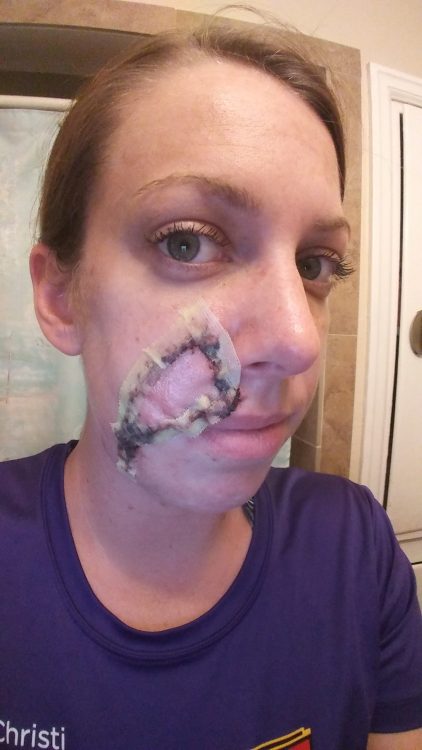
Ehrlich asked her girlfriend if she could see the photo taken right after the cancerous spot was removed. Once she saw it, she cried.
“I couldn’t believe how one little spot could have spread into such a massive spot,” she said. “Still, to this day it is shocking, and I’m still amazed at what my plastic surgeon was able to do.”
Ehrlich has had several follow-up visits with her plastic surgeon and things are healing nicely. She uses a silicone treatment during the day and sleeps with a silicone sheet at night to help with the scarring. She’s currently looking at laser treatment options to help with the scarring.
You can see her healing process below:
September 15, 2017
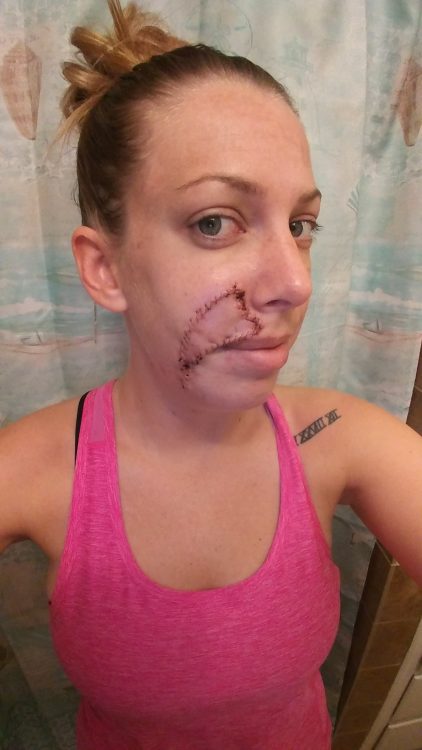
September 18, 2017
After getting her stitches removed.
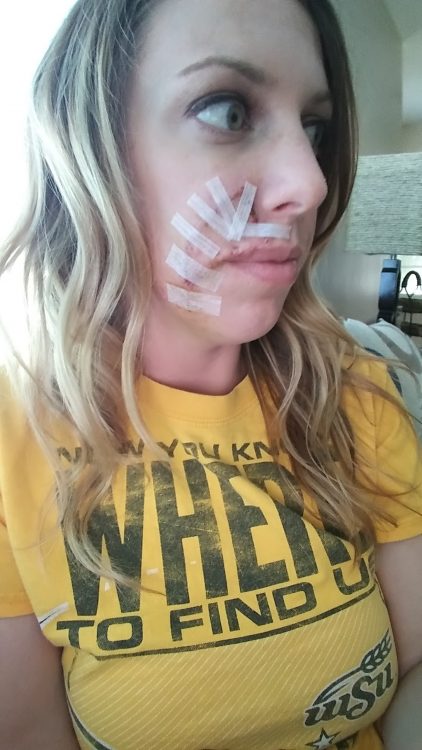
October 3, 2017
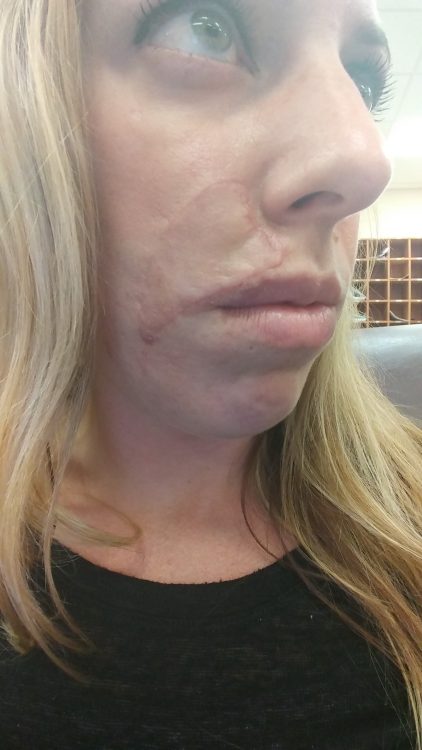
November 2, 2017
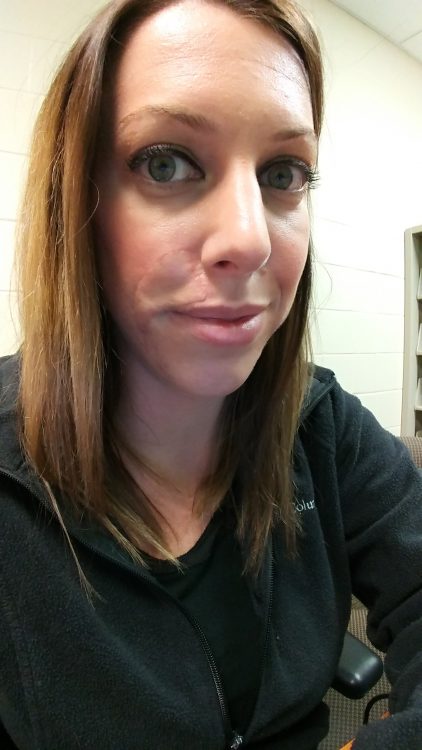
December 6, 2017
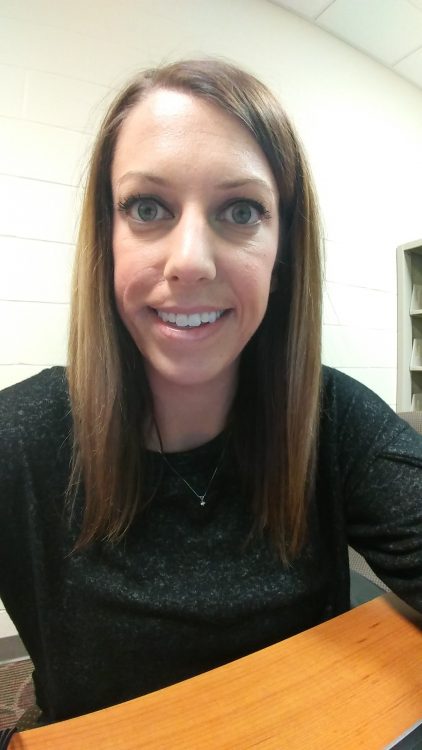
January 3, 2018
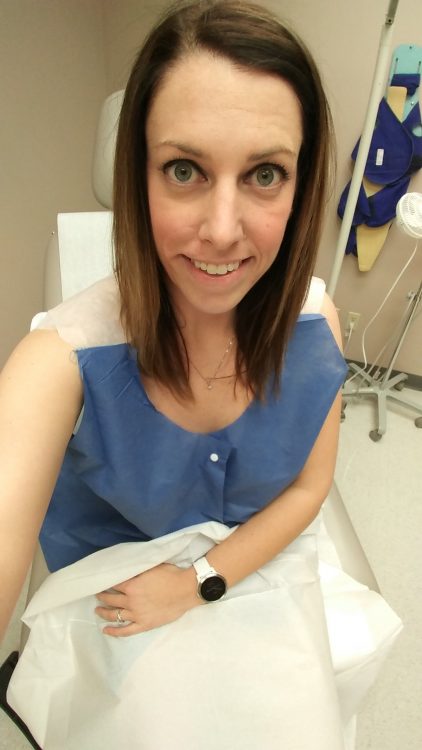
Ehrlich is happy to report that, as of her last routine check, she has no new spots and needs no biopsies. Although she will continue these skin checks every six months, she’s grateful for how things turned out.
Now, instead of going to tanning beds and spending time in the sun, Ehrlich enjoys going to hot yoga and spending time with her fiancé and their family of animals — two pugs, one Shiba Inu, one African grey parrot and one Hahn’s macaw. She is also a marathon runner who enjoys spreading awareness about skin cancer prevention and the importance of getting your yearly skin check.
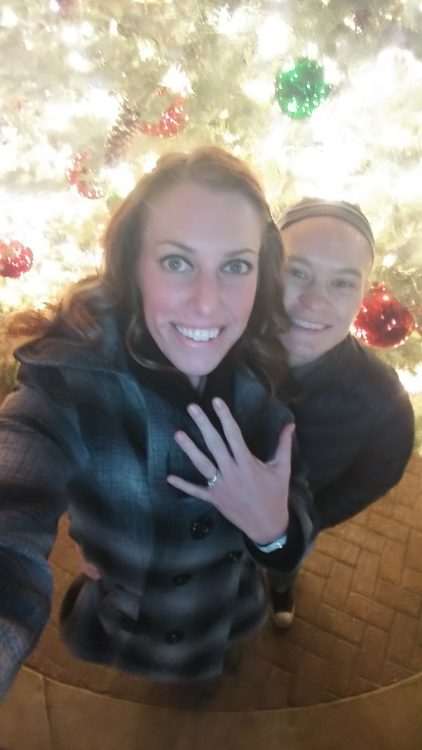
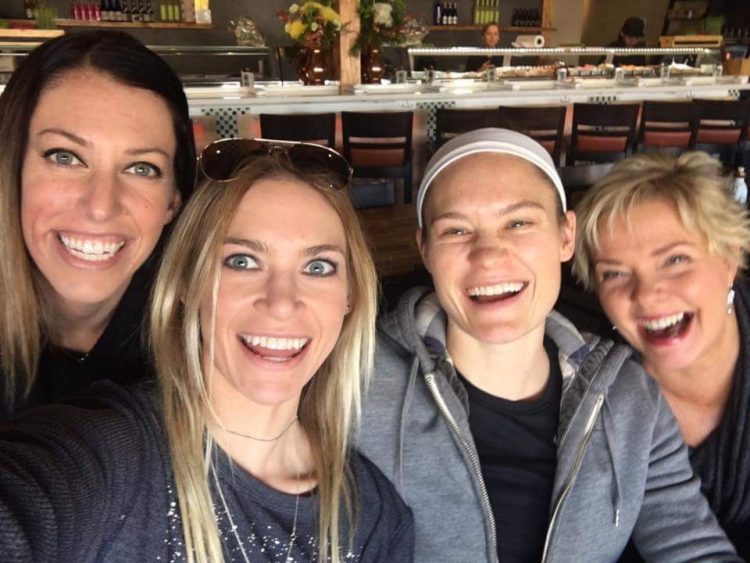
One thing she no longer enjoys: tanning beds.
“My number one piece of advice would be to never use tanning beds,” she said. “And if you have used them or have been exposed to the sun often, then please go in for a yearly skin check.”
All photos courtesy of Stephanie Ehrlich.

